| Customization: |
|---|
Suppliers with verified business licenses
 Audited Supplier
Audited Supplier 
 Package form 2
Package form 2
 2. Lesion roofs, Lesion crusts
2. Lesion roofs, Lesion crusts

 Packaging form 3 (testing whole blood)
Packaging form 3 (testing whole blood)
 Interpretation of Result
Interpretation of Result
 Limitation
Limitation





Suppliers with verified business licenses
 Audited Supplier
Audited Supplier